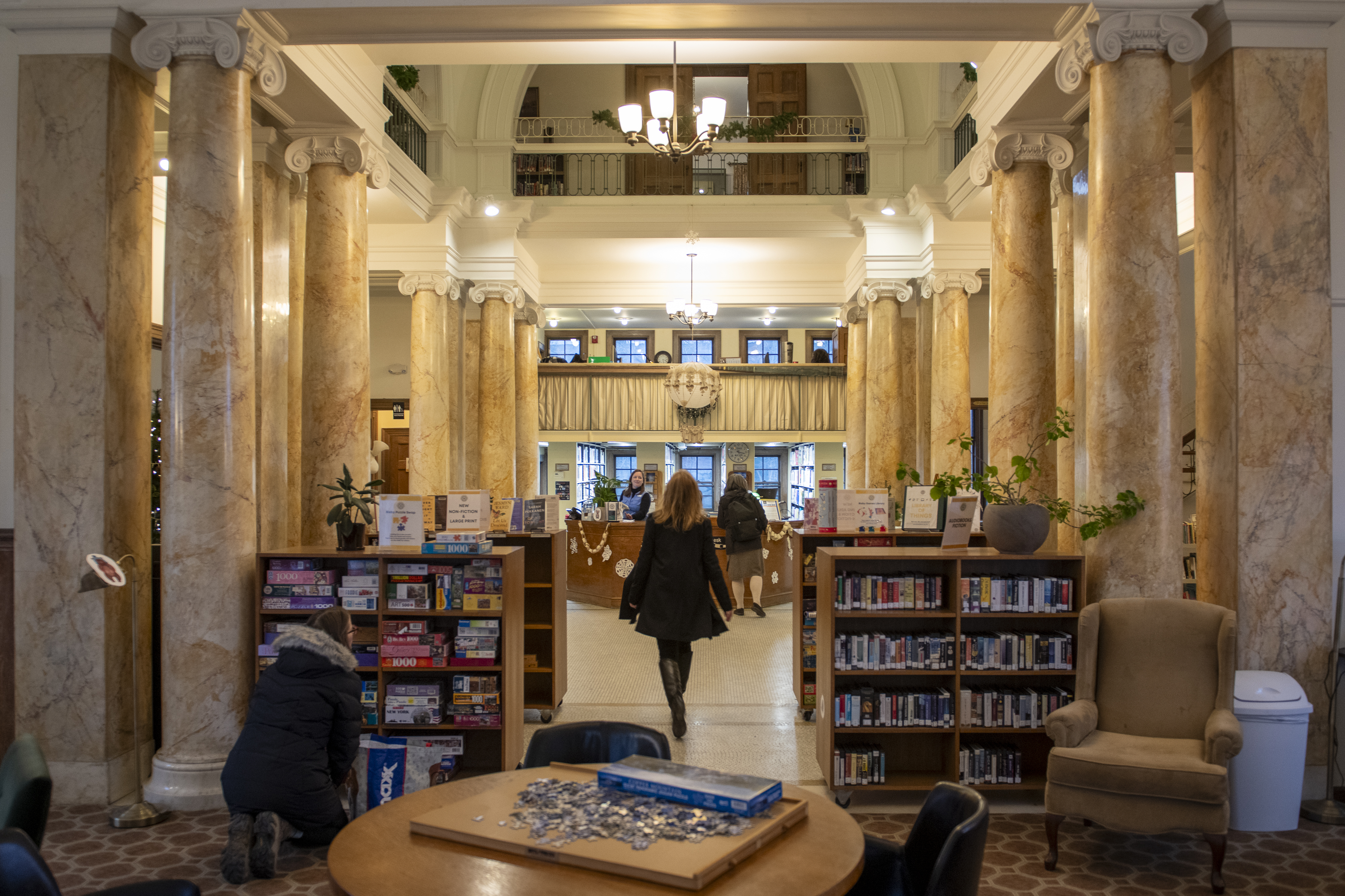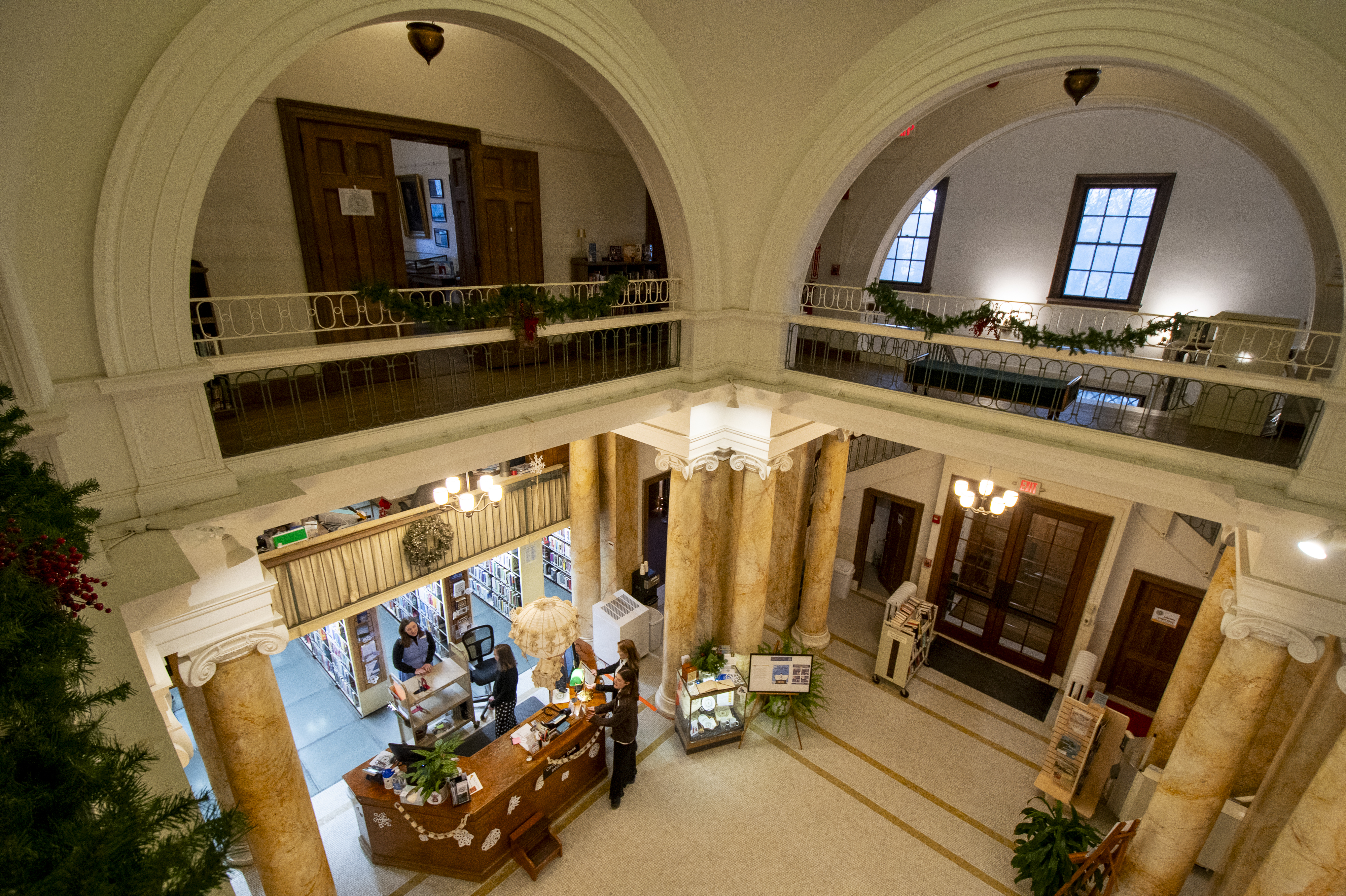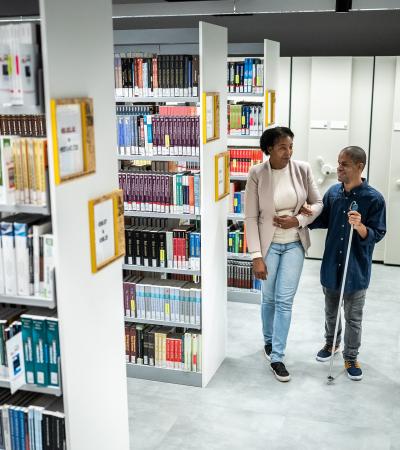These challenges are something that Catharine Hays knows all too well. Hays is the director of the Bixby Memorial Free Library (“the Bixby”), a historic site in Vergennes, Vermont that was constructed in 1912 through a bequest from William Gove Bixby. With support through the American Library Association’s (ALA) Libraries Transforming Communities (LTC) project, Hays has been spearheading efforts to make the Bixby more accessible to individuals with mobility and other disabilities. In this blog post, Hays and Rebecca Joy Norlander of Knology (ALA’s research partner for the LTC project) discuss the challenges of pursuing accessibility in historic library sites.

Catharine: Our library building is listed on both the National and Vermont State Historic Registers. Recently, we applied for an LTC grant from the ALA to improve accessibility for patrons with mobility challenges, but the historic status of the building limits what we can do. It's such a cherished landmark throughout the state! Thankfully, the Bixby has a strong track record of working with the Department of Historic Preservation here in Vermont, so we have some experience navigating these constraints. Currently, the second floor of the building is inaccessible due to an outdated stairlift and the lack of an elevator, so we're actively exploring options to address this in both the short- and longer-term. Additionally, our 100+ year-old structural stacks are not fully wheelchair-accessible, which is another issue we're working to address. Another avenue we’re exploring is renovating the basement to create more accessible, functional, and welcoming community spaces. To move these accessibility goals forward, we used part of our LTC grant funding to commission architectural plans from a local Vermont firm with experience working with libraries and historic buildings.
Rebecca: You’re exploring many different options for the Bixby! As Tom Borchert, a Bixby board member told me, “There are not simple solutions to any of these things.”
I know other LTC grantees have encountered similar challenges. For example, Belding Memorial Library in Ashfield, Massachusetts used grant funds to enhance the physical accessibility of their historic building. Boylston Public Library, also in Massachusetts, was able to update the ceiling lighting in their children's room without conflicting with the building’s historic status. Your neighbor Lawrence Memorial Library in Bristol, Vermont took a unique approach with their “Community Conversation” (a grant requirement) by discussing the limitations of historic buildings and finding ways to improve their spaces, much like what the Bixby did. As a result, they were able to upgrade their back entrance with a fully automated door for easier access. They also used some of their funds to create moveable furniture, allowing them to reconfigure their small space for better flow and accessibility. Louisa Barnhart, Board President at The Albert Church Brown Memorial Library in China, Maine, shared that, during renovations to their early 1800s library, they “focused on maintaining the character of the building.”
These other examples remind me of the Bixby’s approach – even though you can’t do everything you want, there are still changes possible that will make the library more welcoming and easier to use, and libraries shouldn’t be afraid to start with what they CAN do. As Tom said, “We have both really big kinds of structural things, and also ease-of-use things. And we may not solve the big structural things, but we can definitely make the ease-of-use things better.”
Catharine: Even though we still have larger goals related to accessibility, we’ve already done a lot to make our space more welcoming, in terms of changes that are allowed for us as a historic building. For example, with help from our public works department, we’ve added additional handrails on the street-to-sidewalk outside stairs, and also an accessible entrance from the rear parking lot. With the help of high school volunteers, we’ve created landscaping to make that side entrance feel much more inviting! Next up are improvements to the ADA entrance door and LULA lift vestibule, with advice from the Vermont Center for Independent Living so we make best use of their expert guidance to inform our priorities and investments.

Rebecca: From conversations with Tom and Erin Roche, the Bixby Board President, I've gained some valuable insights on how to navigate both the challenges and opportunities of working with a historic library. First and foremost, it's important to celebrate what historic buildings bring to the table. As Erin said,
“The Bixby is not just a library; it holds a significant piece of the community’s historic record. It’s a historic building, and I believe that we have worked hard to make it a space where the full range of our community members feel not just welcome, but truly invited.”
Another key takeaway is to look for guidance within your community. I understand that the nearby opera house in Vergennes is soon breaking ground on an elevator that entailed extensive fundraising. It’s great that they have been such a generous and valuable resource leading up to when the library decides to launch a capital campaign of its own. Tom also spoke about the idea of “community goodwill,” which can be leveraged in various ways—such as identifying individuals with relevant expertise who can connect you to broader professional networks, without necessarily asking them to become decision-makers. As he put it, “It’s one thing to ask, ‘Should I replace my roof?’ and another to ask, ‘Who should I talk to about replacing the library’s roof?’ People are usually willing to help [with the latter], especially when it comes to things like historic preservation.”
Finally, I love this idea of “institutional improvement”—a common idea in education—that suggests accessibility work is an ongoing process. It’s helpful to view this work as a continual effort, rather than something that will ever be fully complete.
Catharine, do you have any other advice for libraries looking to make old buildings more accessible?

Catharine: First, as a small rural Vermont library, we couldn’t have accomplished what we did without the funding support of ALA’s Libraries Transforming Communities Accessibility program. This funding jumpstarted our efforts, energized our team, and inspired our community to get involved.
With this support, we are proud of what we’ve accomplished to date. And yet, we know we have a ways to go to be fully accessible in the ways that the people who engaged during our ALA/ARSL grant-funded community conversations told us were needed and necessary…and who set the bar for us.
As we all know, people matter when it comes to any organization making difficult choices, including libraries. Of note, our Board President, Erin Roche asked Tom Borchert (quoted above) to act as chair of the Board of Trustees Strategic Planning Committee, whose work resulted in making “Belonging” one of our strategic pillars. Tom also serves on the Board’s Building Committee, which drives building spending. That dual perspective is invaluable as we navigate the challenges of making progress with tough choices and potential major investments.
Additionally, the Board is dedicated to gaining input and insight from the entire staff team who experience the library with our volunteers and patrons - day in and day out. That respect for our perspective, balanced with their fiscal oversight and budget priorities will create the longer-term path forward that we hope will make our original benefactor, William Gove Bixby, proud these 123 years later.
Let’s Put it to Work!
The things we learned about the Bixby’s work echo what other small and rural libraries across the US are doing to become more accessible, and have relevance across the broader library field. Does your library have a story to tell about its own accessibility work? Please reach us at programminglibrarian@ala.org to share your experiences!
About this Article
This article was written by Knology – evaluator of the LTC Access initiative. The article is part of a series of blog posts exploring how libraries that received LTC Access funds are working to better meet the needs of patrons with disabilities.
In other posts in this series, we provide a general overview of the accessibility projects these libraries have launched, look at attempts to put the disability rights movement’s ethic of “Nothing About Us Without Us” into practice, consider efforts focused on neurodivergent patrons and older adults, and look at how small and rural libraries are creating accessible community conversations. You can also read about how these libraries are overcoming challenges to planned accessibility upgrades, building partnerships to address community accessibility needs, and improving patrons’ experiences. And for stories of what individual libraries are doing, see the case studies we’ve published about the accessibility work going on at the Lee Public Library, Jessie E. McCully Memorial Library, Beals Memorial Library, and Bixby Memorial Free Library.
For more on how libraries can become more accessible to patrons with disabilities, see the collection of resources we assembled.
Photos courtesy of Caleb Kenna.



